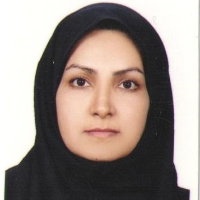Are Cord Blood Bilirubin Values Trustable to Predict the Forthcoming Significant Hyperbilirubinemia Requiring Treatment in Healthy Term Newborns?
Author(s):
Article Type:
Research/Original Article (دارای رتبه معتبر)
Abstract:
Background
Jaundice is a clinical condition that is often observed in pediatric practice and constitutes one of the major issues within the neonatal period. As severe jaundice causes neurotoxicity (kernicterus), the diagnosisandtreatment of severe hyperbilirubinemia is very important. Early prediction will help in early discharge and will prevent hospitalization of babies and mothers. On the other hand, predicting outcome in high risk neonates for subsequent hyperbilirubinemia is required.
Objectives
This study investigates the predictive value of umbilical cord serum bilirubin (UCSB) for subsequent hyperbilirubinemia which is a required treatment in healthy term newborns.
Methods
In this prospective study, 238 healthy term newborns were inducted into the study. Soon after delivery, the cord blood was sent for serum bilirubin analysis. Newborns were followed up by TCB (transcutaneous bilirubinometry) until the third day post birth and those who showed significantly high TCB values, according to the hour-specific normogram, received the appropriate intervention and treatment. The data were analyzed using t-Test, ROC (receiver operating characteristic) curve, and chi-square tests.
Results
Of 238 newborns, 27 (11.4%) cases developed hyperbilirubinemia (bilirubin 15 mg/dL), which required phototherapy. There were no significant differences between the caseswhodid andwhodid not develop hyperbilirubinemia (bilirubin< 15 mg/dL) with respect to various factors that might be associated with the risk of hyperbilirubinemia such as mode of delivery and gender. However, two groups were significantly different in terms of cord bilirubin levels. ROC (receiver operating characteristic) analysis showed that the critical value of umbilical cord serum bilirubin (UCSB) 2.25 mg/dl had high sensitivity (92.6%), good positive and negative predictive value (66% and 69% respectively).
Conclusions
UCSB level 2.25 mg/dL can be a useful predictor of hyperbilirubinemia in healthy term newborns on the third day. Therefore, infants with UCSB level 2.25 mg/dL should be followed up strictly either in a hospital or in an outpatient department on the third day, whereas neonates with cord bilirubin level < 2.25 mg/dL are probably safe for early discharge.Keywords:
Language:
English
Published:
Iranian Journal of Pediatrics, Volume:29 Issue: 4, Aug 2019
Pages:
1 to 5
magiran.com/p2016516
دانلود و مطالعه متن این مقاله با یکی از روشهای زیر امکان پذیر است:
اشتراک شخصی
با عضویت و پرداخت آنلاین حق اشتراک یکساله به مبلغ 1,390,000ريال میتوانید 70 عنوان مطلب دانلود کنید!
اشتراک سازمانی
به کتابخانه دانشگاه یا محل کار خود پیشنهاد کنید تا اشتراک سازمانی این پایگاه را برای دسترسی نامحدود همه کاربران به متن مطالب تهیه نمایند!
توجه!
- حق عضویت دریافتی صرف حمایت از نشریات عضو و نگهداری، تکمیل و توسعه مگیران میشود.
- پرداخت حق اشتراک و دانلود مقالات اجازه بازنشر آن در سایر رسانههای چاپی و دیجیتال را به کاربر نمیدهد.
In order to view content subscription is required
Personal subscription
Subscribe magiran.com for 70 € euros via PayPal and download 70 articles during a year.
Organization subscription
Please contact us to subscribe your university or library for unlimited access!


